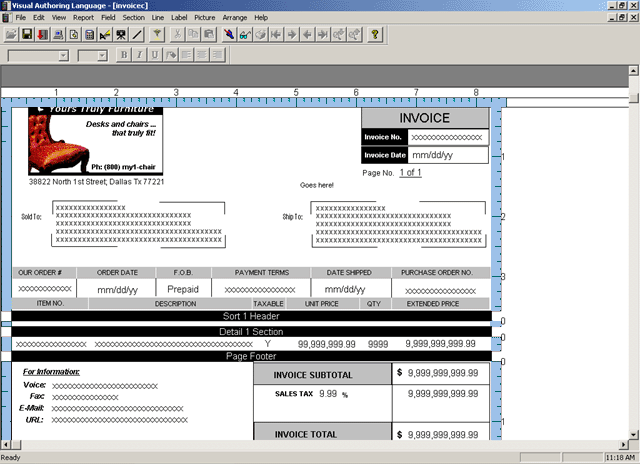What is NetVal?
Screen Shots:
NetVAL is Conetic Software Systems own windows based "network enabled" WYSIWYG drag and drop visual report designer. The Visual Authoring Language consists of two components. The first component is the REPORT EDITOR. The REPORT EDITOR permits you to develop report layouts. The second component is the REPORT EXECUTER. The REPORT EXECUTER is used to print a report using a specific report layout.

For additional information, check out NetVAL's manual on the web. NetVAL offers a comprehensive set of features. The intuitive graphical REPORT EDITOR allows even a novice user to become productive quickly. Being user friendly, every input parameter possesses a default value. The advanced features of NetVAL generate sophisticated reports and documents.
Multiple File/Multiple Section
NetVAL does not impose any limitation on the number of data files that are utilized to supply data. A report document can have up to 9 sort break sections. The application supplies a list of data fields that can be used as the sort fields. In addition to the sort sections, each section footer can display subtotals, average, minimum, maximum and count fields.The REPORT EDITOR also possesses a record selection filter. This enables the user to retreive and print the desired subset of data records from the file.The graphical form editor supports a drag and drop method of placing report items. The alignment tools can be used to align the items horizontally or vertically. Multiple report items can be selected and manipulated. They can be sized by simply pulling the sizing tabs.A number of advanced features are available. For example, you can specify the calculation fields for a section break. A report section can be conditionally suppressed using a section criteria. A section can be instructed to print with every page break. Multiple records can be printed across the page. Etc .......Fields
The NetVAL EDITOR supports the following types of fields: text, numeric, float, logical and date. A long text string field can be word wrapped for printing. The NetVAL EDITOR fields can come from one of the following sources:- Data Field: A field that is associated with a data record.
- Calculation Field: Specified using constants, operators, functions and other fields.
- System Field: Page number, current data, record number, etc..
- Dialog Field: Used to prompt the user for data during the report execution. It can also be printed for informational purposes.







